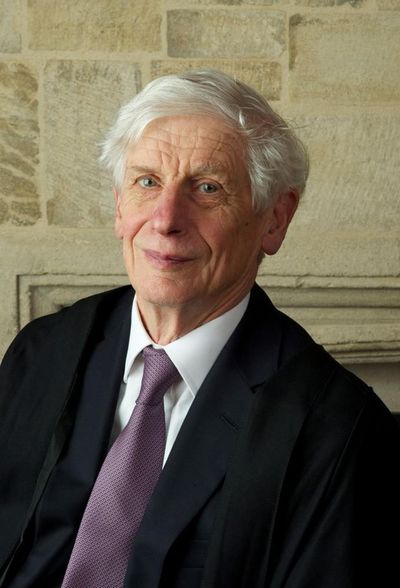UW professor among three scientists awarded the Nobel Prize for physics

A University of Washington professor is among three scientists awarded the Nobel Prize in physics on Tuesday for work that could result in improved materials for electronics or quantum computers.
David Thouless, an 82-year-old professor emeritus at UW, was honored along with Duncan Haldane and Michael Kosterlitz for breakthroughs they made in the 1970s and ’80s about strange states of matter.
The Royal Swedish Academy of Sciences said the trio’s work opened the door to a previously unknown world where matter can assume unusual states or phases.
“Their discoveries have brought about breakthroughs in the theoretical understanding of matter’s mysteries and created new perspectives on the development of innovative materials,” the academy said in a statement.
The $930,000 award was divided with half going to Thouless and the other half to Haldane and Kosterlitz for “theoretical discoveries of topological phase transitions and topological phases of matter.”
The winners “ have used advanced mathematical methods to study unusual phases, or states, of matter, such as superconductors, superfluids or thin magnetic films,” according to the academy. “Thanks to their pioneering work, the hunt is now on for new and exotic phases of matter. Many people are hopeful of future applications in both materials science and electronics.”
Hiring Thouless in 1980 was a coup for the UW, said his colleague John Rehr, also an emeritus professor. “He was very highly regarded,” Rehr said in a phone interview from Stockholm, where, by “cosmic coincidence,” he’s participating in an education program and was able to attend one of Tuesday’s Nobel presentations.
“I was thrilled at the news,” Rehr said.
The two men met in the 1960s at Cornell, where Thouless studied under Nobel laureate and Manhattan Project luminary Hans Bethe. In his 20s, Thouless had already authored a book on quantum physics that was considered a bible in the field, Rehr recalled.
“He’s a brilliant physicist.”
That brilliance kept his colleagues on their toes.
“When you asked him a physics question, he would not just answer at a pedestrian level,” Rehr said. “He would think about it for a minute or two and give you a really deep response.”
The Nobel citation recognizes two branches of the field of topology: theory and materials. That half the prize money went to Thouless reflects his major contributions in both arenas, Rehr pointed out.
“It was really unusual in that the theories predicted these phenomena before they were found experimentally, and it was done by a combination of brilliant mathematics and completely solid physical arguments,” he said.
Kosterlitz and Thouless’ findings overturned the prevailing theory at the time that superconductivity or suprafluidity could not occur in thin layers, the academy said.
“They demonstrated that superconductivity could occur at low temperatures and also explained the mechanism, phase transition, that makes superconductivity disappear at higher temperatures.”
Thouless was born in the United Kingdom and studied at Winchester College, Trinity Hall, Cambridge, earned his doctorate at Cornell University, and did his postdoctoral studies at the University of California, Berkeley.
Michael Thouless, son of David Thouless, told the Associated Press his father wasn’t able to give interviews because of medical reasons. In a statement, he said his father “was moved and honored to learn of the Nobel Prize, and he was very happy to hear that he would share it with Mike Kosterlitz and Duncan Haldane.”
Haldane, 65, is a physics professor at Princeton University in New Jersey. Kosterlitz, 73, is a physics professor at Brown University in Providence, Rhode Island.
Thouless retired from the UW in 2003. His wife, Margaret, also worked at the UW in the field of pathobiology.
He is the UW’s seventh Nobel laureate, and second in physics after Hans Dehmelt in 1989.
Information from the Associated Press and the University of Washington is included in this report.